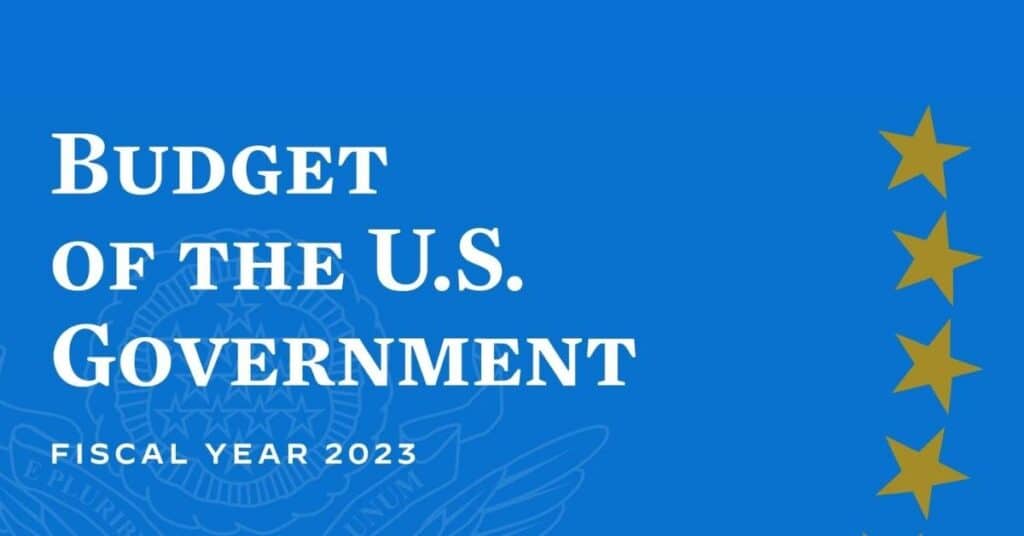The White House announced its updated budget proposal Monday, calling for a 9% increase in federal spending on USDA programs over the agency’s current operating budget. Biden’s budget would increase rural funding for affordable housing, high speed internet, clean energy, forest management, rural economic development, research and farm conservation programs, among other priorities sought by rural advocates.

“This budget proposal is a statement of intent that underscores President Biden’s commitment to the success of rural Americans and their communities,” Secretary of Agriculture Tom Vilsack said in a statement accompanying the budget announcement. “The president’s budget provides USDA with the tools needed to support a vibrant, revitalized, and prosperous rural America.”
Key budget increases for USDA rural programs would include:
- Rural Housing – $1.8 billion for USDA multifamily housing programs, a $259 million increase from the 2021 enacted level, according to USDA. The funding also prioritizes new construction practices that improve “water efficiency, implement green features, or facilitate climate resilience.”
- Clean Energy – $300 million in new funding to help rural electric providers transition to clean energy, as well as additional funding “to support additional clean energy, energy storage, and transmission projects that would create good-paying jobs and meet the ambitious climate progress that science demands.”
- High Speed Internet – $600 million for the ReConnect program, which “provides grants and loans to deploy broadband to unserved areas, especially tribal areas,” as well as $25 million to help rural telecommunications cooperatives refinance debt and upgrade facilities.
- Farm and Land Conservation – $1.2 billion to “address climate change across private, working agricultural land,” with a large increase for USDA Natural Resource and Conservation Service (NRCS) employees and technical assistance providers. An additional $135 million is provided to protect and restore watersheds, building on the $618 million investment that was part of the 2021 Bipartisan Infrastructure Law.
- Forests and Wildfires – $285 million increase in U. S. Forest Service funding “to reduce the risk of wildland fire, restore ecosystems, and protect communities.” In addition, the budget includes $390 million “in additional funding to ensure ongoing support for President Biden’s direction that no firefighter is paid less than $15 per hour, hire additional firefighters, increase their pay, and convert more firefighters from temporary to permanent.”
A shift in strategy
Though the proposal includes increases in numerous programs, Biden’s budget does represent a significant shift in strategy compared to last year’s more expansive “Build Back Better” agenda. The budget does not include an extension of the Child Tax Credit benefits, for instance, that helped to reduce rural poverty in 2021. Nor does the budget include additional expansions to some nutrition programs that serve millions of low-income rural families and children, as well as supporting jobs and rural economies.
Biden’s more modest budget approach during this mid-term election year seems to be an attempt to win over Senator Joe Manchin (D-West Virginia), as well as a few other Democratic senators, who raised concerns in 2021 about Build Back Better’s impact on budgets and deficits, as well as rising inflation.
This White House budget proposal seeks to address these budgetary concerns by raising taxes on corporations and the extremely wealthy. Biden is proposing a 20% minimum tax on households worth more than $100 million, including both standard taxable income as well as increased wealth from gains in stock or other asset values. The budget also includes a corporate tax rate hike from 21% to 28%, reversing a key provision of the 2017 Republican tax cuts.
The president is using the budget release to respond to criticisms over the continued Covid-19 pandemic, Russia’s invasion of Ukraine, and inflation. The White House statements document a track record of a growing economy and historic federal investments through both the American Rescue Plan Act and the Bipartisan Infrastructure Law.
“America entered 2021 in the midst of a devastating health crisis, on the heels of the worst economic crisis since the Great Depression,” President Biden wrote in his budget letter. “We ended 2021 having created over 6.5 million new jobs, the most our nation has ever recorded in a single year.”
The statement also touted a high economic growth rate and a falling unemployment rate (“the fastest decline in recorded history”).
Biden’s economic numbers are bolstered by the fact that his baseline for comparison includes the period when the U.S. hit the depths of economic fallout from the pandemic.
First step in budget process for next year
The president’s budget request, required by law, is the first step of the annual federal process to fund government operations and spending. Congress will negotiate the final budget deal throughout 2022, and legislators regularly reject or ignore presidential budget requests altogether. The current budget, which just passed earlier this month after a series of short-term extensions, expires September 30. Biden’s new budget proposal would cover the next fiscal year — Oct. 1, 2022, through Sep. 30, 2023.
The annual federal budget process provides discretionary spending on top of existing legal requirements. Most rural-focused federal budget programs — from nutrition support to farming programs to rural development — are set through the federal farm bill. The current farm bill was passed in 2018 and runs through 2023. The House and Senate Agriculture Committees are already working on an updated farm bill, which is expected to be written and passed in 2023.
This article first appeared on The Daily Yonder and is republished here under a Creative Commons license.![]()






